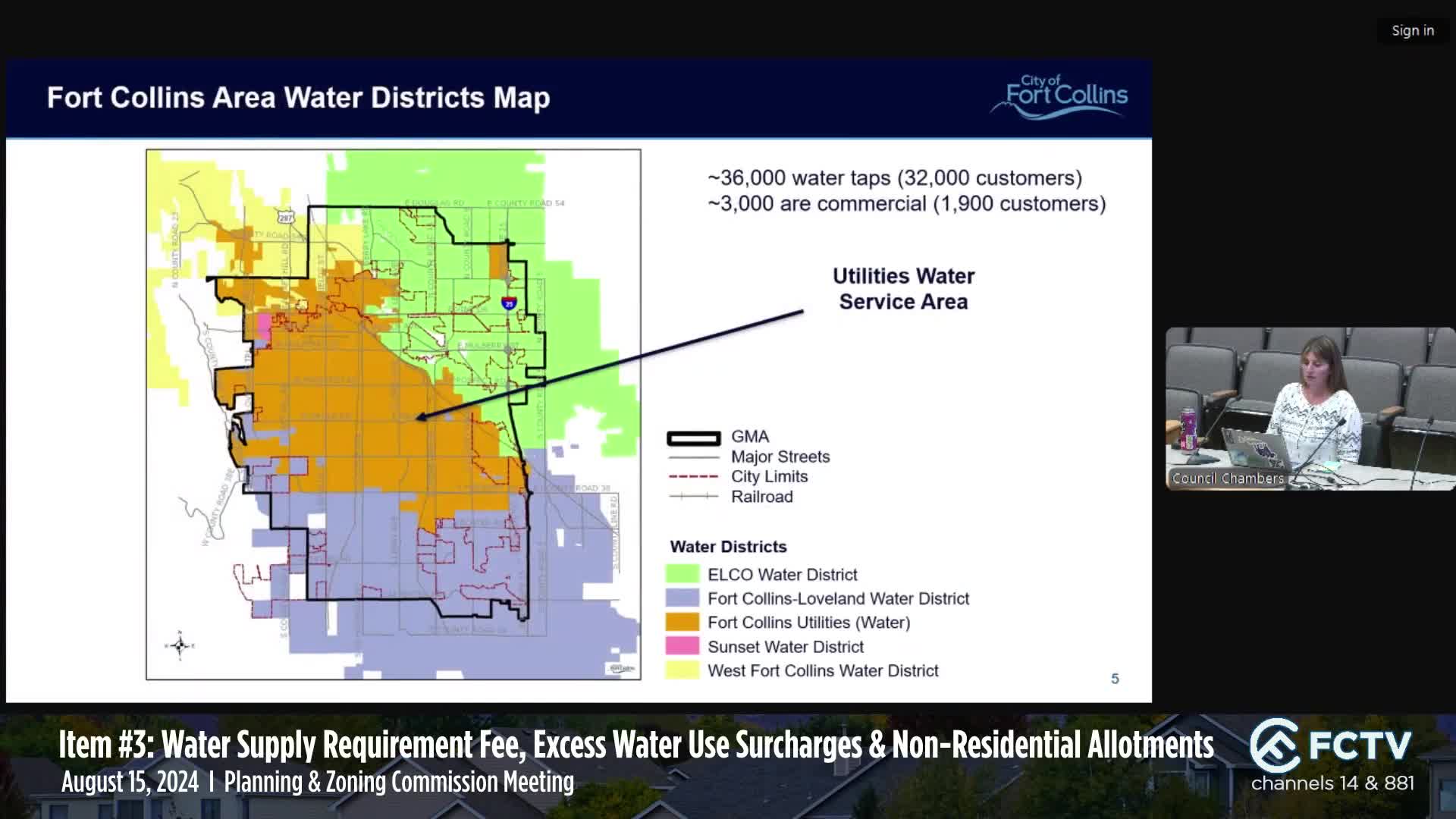City Council Proposes New Water Fee Structure Amid Scarcity
August 15, 2024 | Fort Collins City, Larimer County, Colorado

This article was created by AI summarizing key points discussed. AI makes mistakes, so for full details and context, please refer to the video of the full meeting. Please report any errors so we can fix them. Report an error »

In a recent government meeting, officials discussed significant updates regarding the water supply requirements (WSR) and associated fees for utility services in the region. The focus was on a proposed ordinance that aims to adjust the WSR fee, which is a one-time charge paid by developers to ensure adequate water service for new developments.
The utility service area, highlighted in the meeting, serves approximately 32,000 customers, including 3,000 commercial accounts. Of these, around 1,000 non-residential accounts currently lack water allotments. The meeting outlined a timeline for the project, noting that feedback from previous council sessions in April and July had led to revisions in the proposed methodology for calculating water supply requirements.
The proposed fee structure includes a new WSR of $63,800 per acre-foot, a decrease from the current fee of $68,200. This adjustment is part of a broader reevaluation of water rights costs, which have seen significant fluctuations in recent years due to increasing demand and scarcity. The meeting emphasized that the WSR is a small portion of the overall revenue for the water fund, with 95% of revenue coming from rates rather than development fees.
Officials presented various methodologies for calculating the WSR, including a hybrid approach that combines existing water rights valuation with future infrastructure needs. The meeting also highlighted the importance of considering market conditions and potential uncertainties, such as climate change, in determining these fees.
Comparative analysis with regional water providers revealed that the proposed fee would position the utility as one of the more affordable options for developers, particularly for multifamily developments and restaurants, which typically have higher water usage requirements.
Concerns were raised by council members regarding the implications of lowering the development fee on overall revenue and the potential impact on customer rates. The discussion underscored the delicate balance between encouraging development and ensuring sustainable funding for water infrastructure.
The council plans to take a first reading of the ordinance in October, marking a critical step in the ongoing efforts to manage water resources effectively in the face of growing demand and environmental challenges.
The utility service area, highlighted in the meeting, serves approximately 32,000 customers, including 3,000 commercial accounts. Of these, around 1,000 non-residential accounts currently lack water allotments. The meeting outlined a timeline for the project, noting that feedback from previous council sessions in April and July had led to revisions in the proposed methodology for calculating water supply requirements.
The proposed fee structure includes a new WSR of $63,800 per acre-foot, a decrease from the current fee of $68,200. This adjustment is part of a broader reevaluation of water rights costs, which have seen significant fluctuations in recent years due to increasing demand and scarcity. The meeting emphasized that the WSR is a small portion of the overall revenue for the water fund, with 95% of revenue coming from rates rather than development fees.
Officials presented various methodologies for calculating the WSR, including a hybrid approach that combines existing water rights valuation with future infrastructure needs. The meeting also highlighted the importance of considering market conditions and potential uncertainties, such as climate change, in determining these fees.
Comparative analysis with regional water providers revealed that the proposed fee would position the utility as one of the more affordable options for developers, particularly for multifamily developments and restaurants, which typically have higher water usage requirements.
Concerns were raised by council members regarding the implications of lowering the development fee on overall revenue and the potential impact on customer rates. The discussion underscored the delicate balance between encouraging development and ensuring sustainable funding for water infrastructure.
The council plans to take a first reading of the ordinance in October, marking a critical step in the ongoing efforts to manage water resources effectively in the face of growing demand and environmental challenges.
View full meeting
This article is based on a recent meeting—watch the full video and explore the complete transcript for deeper insights into the discussion.
View full meeting
